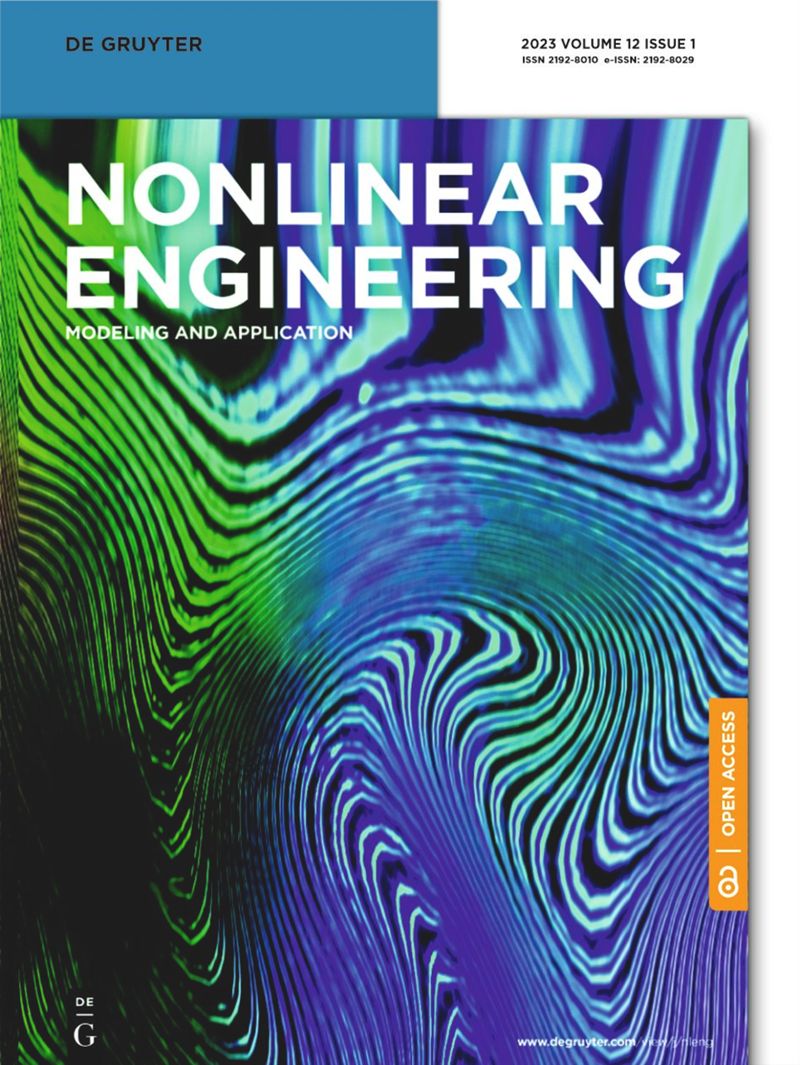二级纳米流体磁化对流的Prabhakar微分研究
IF 2.4
Q2 ENGINEERING, MECHANICAL
引用次数: 3
摘要
纳米颗粒在基础流体中的应用对冷却和加热技术的表现产生了强烈的影响。纳米颗粒通过改变基液中的热特性来改善导热性。纳米颗粒在增加传热方面的专长吸引了一些研究人员对工作流体进行更多的评估。本研究对磁流体动力学二级纳米流体对流流动的研究提出了异议。采用Prabhakar分数法,以氧化石墨烯(GO){\rm{GO}}和二硫化钼(Mo s2){\rm{Mo}}{{\rm{S}}}(_2){纳米颗粒为基液,利用傅里叶定律得到分数模型。用拉普拉斯方法对方程进行解析求解。温度和动量分布显示了分数参数(α, β, γ) (}\alpha, \beta, \gamma)在不同时间的对偶行为。当{\rm{Grashof\; number}}磁参数和普朗特数较大时,速度随格拉霍夫数的增大而增大,随普朗特数的增大而减小。在不同数值方法的比较中,曲线是重叠的,说明我们得到的结果是真实的。控制剖面对比的数值研究表明,0.2 0.2≤温度≤4.36 4.36百分比和0.48≤7.53 0.48 \le 7.53百分比的结果优于Basit等人的结果。与二硫化钼相比,氧化石墨烯对温度和动量分布的影响更大。本文章由计算机程序翻译,如有差异,请以英文原文为准。
Investigation of magnetized convection for second-grade nanofluids via Prabhakar differentiation
Abstract The application of nanoparticles in the base fluids strongly influences the presentation of cooling as well as heating techniques. The nanoparticles improve thermal conductivity by fluctuating the heat characteristics in the base fluid. The expertise of nanoparticles in increasing heat transference has captivated several investigators to more evaluate the working fluid. This study disputes the investigation of convection flow for magnetohydrodynamics second-grade nanofluid with an infinite upright heated flat plate. The fractional model is obtained through Fourier law by exploiting Prabhakar fractional approach along with graphene oxide ( GO ) ({\rm{GO}}) and molybdenum disulfide ( Mo S 2 ) ({\rm{Mo}}{{\rm{S}}}_{2}) nanoparticles and engine oil is considered as the base fluid. The equations are solved analytically via the Laplace approach. The temperature and momentum profiles show the dual behavior of the fractional parameters ( α , β , γ ) (\alpha ,\beta ,\gamma ) at different times. The velocity increases as Grashof number {\rm{Grashof\; number}} increases and declines for greater values of magnetic parameter and Prandtl number. In the comparison of different numerical methods, the curves are overlapped, signifying that our attained results are authentic. The numerical investigation of governed profiles comparison shows that our obtained results in percentages of 0.2 0.2 ≤ temperature ≤ 4.36 4.36 and velocity 0.48 ≤ 7.53 0.48\le 7.53 are better than those of Basit et al. The development in temperature and momentum profile, due to engine oil–GO is more progressive, than engine oil–MoS2.
求助全文
通过发布文献求助,成功后即可免费获取论文全文。
去求助
来源期刊
CiteScore
6.20
自引率
3.60%
发文量
49
审稿时长
44 weeks
期刊介绍:
The Journal of Nonlinear Engineering aims to be a platform for sharing original research results in theoretical, experimental, practical, and applied nonlinear phenomena within engineering. It serves as a forum to exchange ideas and applications of nonlinear problems across various engineering disciplines. Articles are considered for publication if they explore nonlinearities in engineering systems, offering realistic mathematical modeling, utilizing nonlinearity for new designs, stabilizing systems, understanding system behavior through nonlinearity, optimizing systems based on nonlinear interactions, and developing algorithms to harness and leverage nonlinear elements.

 求助内容:
求助内容: 应助结果提醒方式:
应助结果提醒方式:


